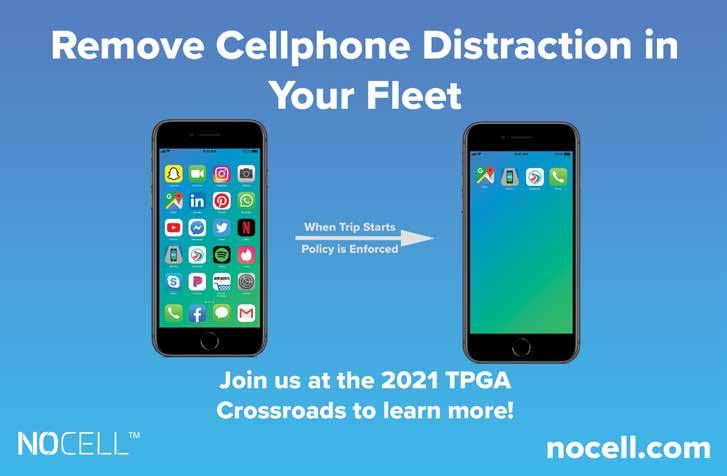
5 minute read
Need Help Getting Workers? Use This Tax Credit to Pay a Hiring Bonus
Gene Marks
The economy is quickly recovering from the pandemic and many small business owners are seeing an increase in demand. But, thanks to stimulus checks, higher unemployment compensation and continuing health and safety fears, many employers are finding it difficult to entice their workers back to their jobs. Some larger employers – from restaurant chains to Wawa – have been offering hiring bonuses. But can small businesses who are still struggling to get back on their feet afford the same? Thanks to a little-known federal tax program, the answer may be yes.
Advertisement
The program is called the Work Opportunity Tax Credit. It’s been around for a number of years but was extended in last December’s stimulus bill through the end of 2025. The credit — which reduces the amount of federal taxes owed — can be a lucrative recruiting tool for small businesses who want to pay hiring bonuses to prospective employees.
“Many of our clients have been impacted adversely by COVID-19 and have looked to us for ideas to cut down on costs in order to keep their doors open,” says Rebecca Norris, CPA a tax manager at Isdaner & Company, LLC in Bala Cynwyd. “The program is one of the money-saving tools we recommend to these clients.”
The tax credit is available to employers that hire certain types of employees, such as those coming off of welfare or a “qualified” veteran, which includes ex-service personnel who were unemployed for anywhere from four weeks (whether or not consecutive) to at least 6 months over the past year. The list of eligible workers also includes ex-felons, qualified social security insurance recipients or those that have been receiving long-term welfare assistance from the government.

But the credit is also available to employers who hire a “qualified long-term unemployment” recipient. That worker is defined as someone who has been unemployed for not less than 27 consecutive weeks at the time of hiring and received unemployment compensation during some or all or the unemployment period. Sound familiar? It should. Given the deep impact of the pandemic recession, many workers today find themselves in this situation.
If any of your prospective hires fit that description, then your business may qualify for the tax credit. To make sure of this you have to file Form 8850 — the Pre-Screening Notice and Certification Request — with your respective state workforce agency within 28 days after the eligible worker begins work to certify that the worker is eligible.
So how much money can you save? A lot.
The credit can reduce your taxes from anywhere between $2,400 to $9,600 per employee, depending on which target group the qualified employee belongs to. For most hires, however, it’s calculated at 40 percent of their year’s wages up to a total credit amount of $6,000. The individual must be retained for at least 400 hours during the year to get this amount, otherwise the credit may be reduced. The credit can be even higher if the person you hire has been receiving long-term welfare assistance from the government.
If you own a “pass through” organization like an S-Corporation or partnership, the credit is taken on both your federal and state individual tax returns against the taxes you owe. But it can also be used to offset payroll taxes, so both for-profits and non-profit organizations are able to take advantage.
“While for-profit businesses have greater flexibility in utilizing the Work Opportunity credit, in some cases taxexempt organizations can benefit from it as well,” Norris says.
All of the calculations are done on IRS Form 5884. The credit is non-refundable which means you need to use it that year or lose it. However, you are still able to carry it to last year’s tax returns or carry it forward for 20 years.
My advice is to not wait until the end of the year to take advantage of this credit. Use it as a proactive tool. When you’re looking to hire a prospective employee find out as soon as possible whether that person falls into any of the credit’s eligible categories (the “qualified long-term unemployment recipient” being the most common). Calculate the credit in advance of hiring the employee and use all or a portion of that future benefit to offer a hiring bonus. It’s extra money that the government is providing you and it could make the difference between hiring a great person or losing him or her to someone else.
Let the company that knows your business, protect your business
worker’s compensation • general liability • auto insurance property insurance • health insurance & employee benefits risk management services
Protecting Propane and Petroleum
Dealers for over 20 Years! Member
Gene Marks is a business owner, small business expert, author, speaker, CPA, and columnist for the Washington Post. Learn more at www.genemarks.com.
This article originally appeared in The Philadelphia Inquirer on May 11, 2021. It is reprinted here with the kind permission of the author.
RCC IS READY TO BE YOUR TECHNOLOGY PARTNER
• Mobile access anywhere, anytime with MOGO • Convenient Customer Apps • No-worry RCC Cloud data hosting • Complete back-office accounting for fuel people by fuel people
Call 800-722-6659 or visit www.rccbi.com
Order Your 2022 Propane Safety & Recipe Wall Calendar

Low-Cost Calendars FREE Shipping 6 months of propane safety 6 months of recipes 1 bonus month Check gas gauge reminders Winter prep countdown ORDER DEADLINE August 16, 2021


Order on next page or at www.propanecounciloftexas.org Q?’s: 800-325-7427 info@propanecounciloftexas.org







